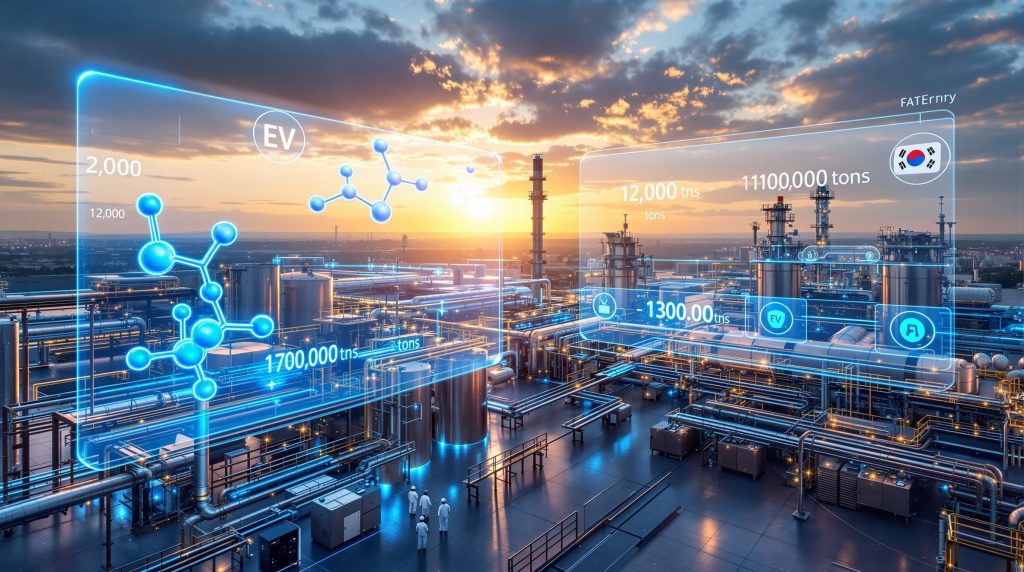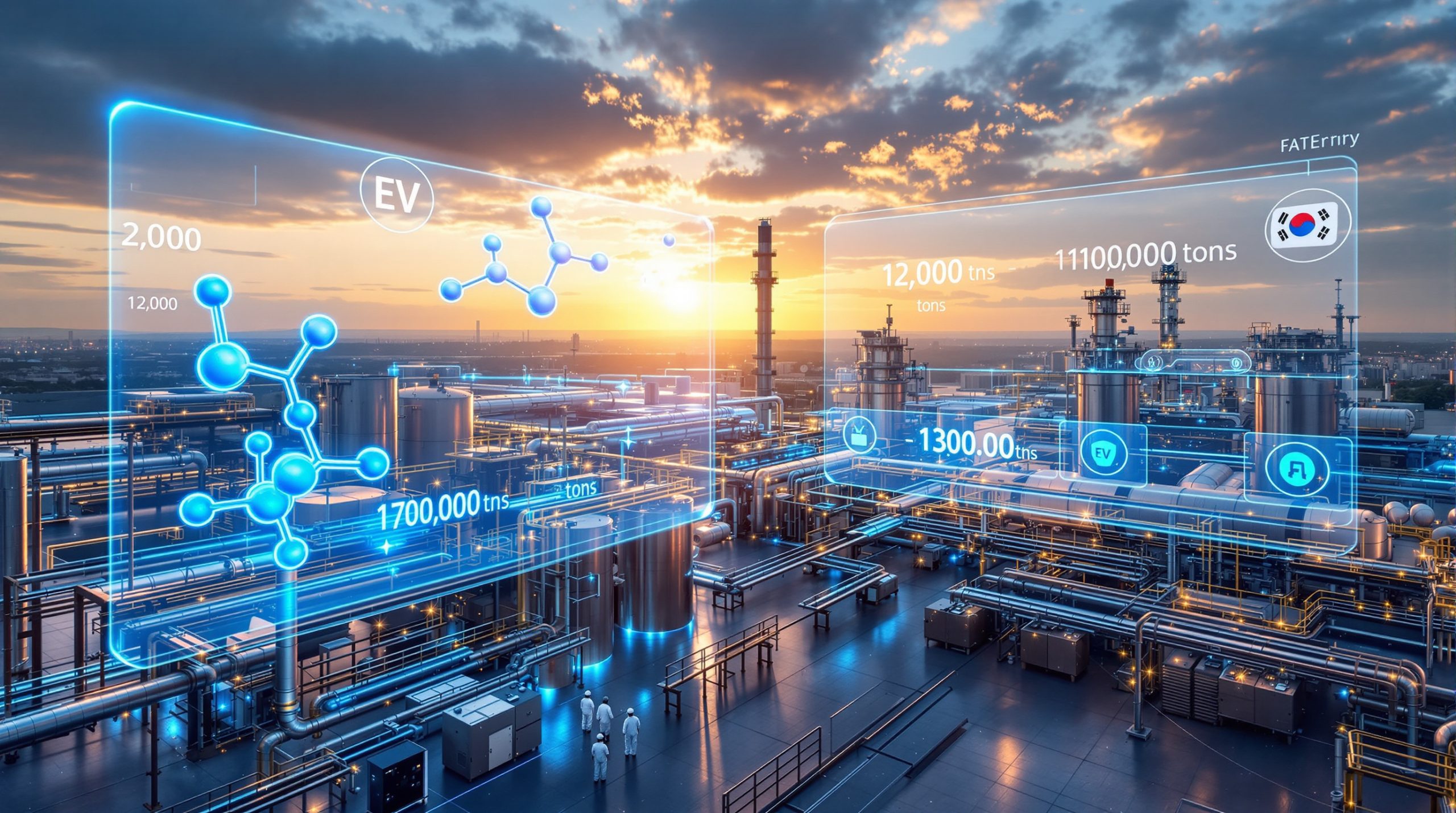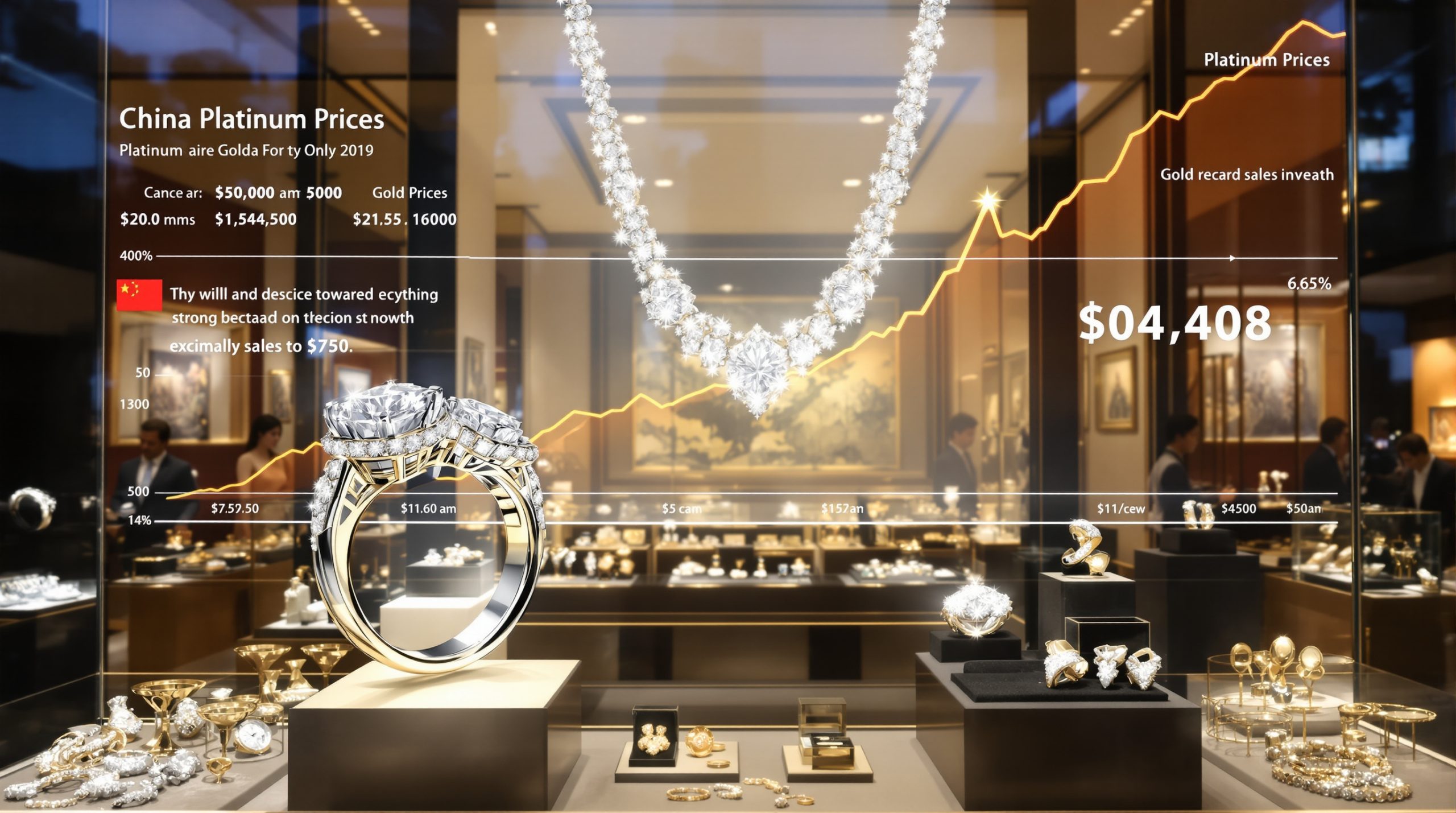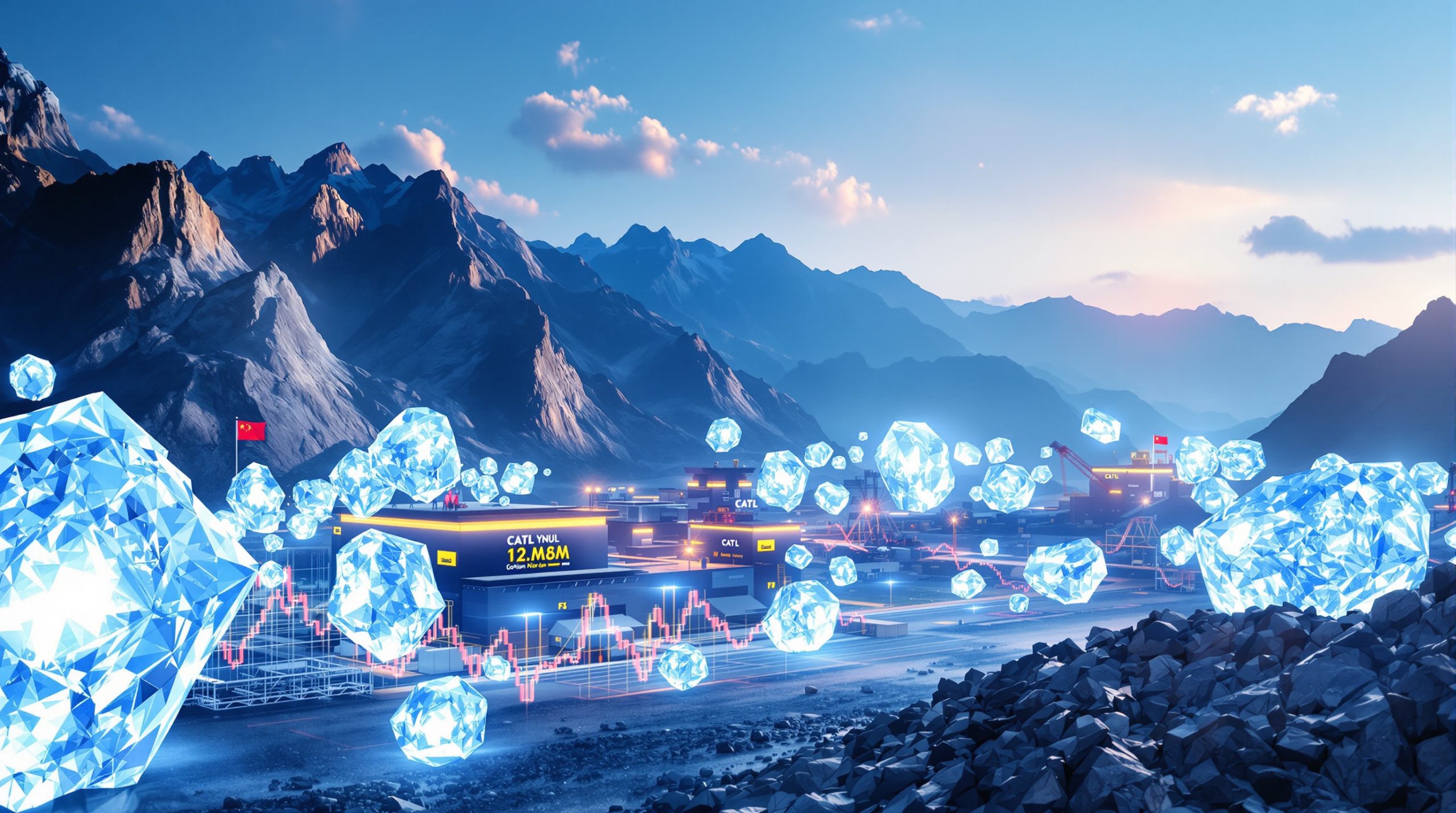Saemangeum's Strategic Battery Material Factory: South Korea's Supply Chain Revolution
South Korea has taken a decisive step toward reducing its dependence on Chinese battery materials with the completion of a trillion-won precursor factory in Saemangeum. The new battery material factory in Saemangeum represents a cornerstone of the nation's strategy to secure its position in the global electric vehicle supply chain while creating a robust domestic battery ecosystem.
What Makes the Saemangeum Battery Material Factory Strategically Important?
The newly completed precursor manufacturing facility in Saemangeum, North Jeolla Province marks a pivotal development in South Korea's battery supply chain strategy. With a massive investment of 1 trillion won (approximately $730 million), this 132,231 square meter facility is designed to address several strategic imperatives critical to South Korea's industrial future.
Investment Scale and Economic Impact
The investment scale of the Saemangeum battery material factory is substantial by any measure:
- Total investment: 1 trillion won (approximately $730 million)
- Facility size: 132,231 square meters (40,000 pyeong)
- Job creation: Approximately 1,000 new positions
- Regional impact: Major boost to North Jeolla Province's industrial sector
This investment represents more than just financial commitment—it signals South Korea's determination to establish domestic capability in a critical technology sector. The facility, located in the Saemangeum National Industrial Complex in Gunsan, is expected to create significant economic ripple effects throughout the region.
Reducing Dependence on Chinese Imports
The strategic importance of the factory is perhaps best understood through the lens of supply chain sovereignty. Currently, China dominates approximately 80% of the global precursor market, creating significant vulnerabilities for South Korean battery manufacturers.
This overdependence on Chinese suppliers has become increasingly problematic as global trade tensions and supply chain disruptions have highlighted the risks of concentrated supply chains. The Saemangeum factory represents a direct effort to address this imbalance by establishing domestic production capabilities for these critical materials.
The facility aligns perfectly with South Korea's broader "K-battery materials" initiative, which aims to create a self-sufficient domestic supply chain for battery components. This approach not only reduces geopolitical vulnerabilities but also positions South Korean manufacturers to better compete in global markets with more secure supply lines.
How Will the Saemangeum Precursor Factory Scale Production?
The Saemangeum precursor factory has established an ambitious production roadmap designed to meet the rapidly growing global demand for electric vehicle batteries.
Ambitious Production Roadmap
The facility's production plan follows a clear scaling strategy:
- Trial production beginning in late 2025
- 20,000 tons annual production by 2026
- 40,000 tons by 2027
- 120,000 tons by 2029
This final capacity target of 120,000 tons would provide enough material to support the production of approximately 1.3 million electric vehicles annually—a significant contribution to global EV supply chains.
The phased approach to scaling production reflects both technical realities of ramping up sophisticated chemical manufacturing processes and the anticipated growth curve of global EV adoption. By 2029, when the factory reaches full capacity, the global EV market is expected to be significantly larger than today, with EV-driven mining trends showing substantial growth.
Precursor Manufacturing Technology
The technical aspects of precursor production highlight why this facility is so crucial to battery manufacturing. Precursors are specialized chemical compounds created by precisely combining nickel, cobalt, manganese, and aluminum in specific formulations. These materials serve as the foundation for cathode active materials, which function as the heart of lithium-ion batteries.
The quality and consistency of these precursors directly impact battery performance characteristics including energy density, charging speed, and cycle life. Advanced process controls employed at the Saemangeum facility will enable the production of high-performance battery materials tailored to meet the demanding specifications of next-generation electric vehicles.
The manufacturing process requires sophisticated chemical engineering expertise, precise control systems, and rigorous quality assurance protocols—all areas where South Korea aims to establish technological leadership independent from Chinese suppliers.
Who Are the Key Players Behind This Strategic Investment?
The Saemangeum precursor factory represents a significant collaboration between major industrial entities and demonstrates South Korea's commitment to establishing a complete battery supply chain within its borders.
The LS-L&F Battery Solution Joint Venture
The facility is operated by LS-L&F Battery Solution (LLBS), a strategic joint venture between:
- LS Group: A major South Korean conglomerate with expertise in electrical and power infrastructure
- L&F Co.: A specialized battery materials manufacturer with established cathode production capabilities
This partnership combines LS Group's industrial scale and infrastructure expertise with L&F's specialized knowledge of battery material chemistry and manufacturing processes. The joint venture received approval for the entire factory in April 2025 and completed construction by September 2025—an impressive timeline that underscores the strategic urgency of the project.
LS Group Chairman Koo Ja-eun has been instrumental in directing the group's expansion into what they term the "BES" sectors: batteries, electric vehicles, and semiconductors. This strategy aims to leverage the group's extensive experience in power infrastructure and energy to build future business foundations in high-growth technology areas.
Government and Industry Collaboration
The completion ceremony on September 30, 2025, highlighted the broad base of support for this strategic initiative. Key attendees included:
- LS Group Chairman Koo Ja-eun
- L&F Board Chairman Heo Je-hong
- North Jeolla Province Governor Kim Kwan-young
- Saemangeum Development Agency Commissioner Kim Eui-gyeom
- LS MnM CEO Dong-hwi Koo
- LLBS CEO Kyung-soo Jung
The presence of provincial leadership and development agency officials underscores the importance of the factory not just for the companies involved, but for regional development priorities and national industrial policy. This alignment between corporate strategy and government development goals has been a hallmark of South Korea's successful industrial policy throughout its economic development.
What Role Will This Factory Play in Korea's Battery Ecosystem?
The Saemangeum precursor factory represents one piece of a comprehensive strategy to create a vertically integrated battery materials supply chain within South Korea.
Creating a Domestic Supply Chain
The precursor facility is designed to operate as part of an integrated ecosystem that includes:
- LS MnM's nickel sulfate plant: Currently under construction in Saemangeum and scheduled to produce 62,000 tons of nickel sulfate annually by 2029
- L&F's cathode material manufacturing: The precursors from LLBS will supply L&F's cathode manufacturing operations
This creates a closed-loop domestic supply chain:
- LS MnM produces nickel sulfate →
- LLBS converts it to precursors →
- L&F manufactures cathode materials →
- Korean battery manufacturers receive domestic materials
This vertical integration strategy addresses multiple vulnerabilities in the current battery supply chain. By producing these critical materials domestically, South Korean battery manufacturers can reduce logistics costs, minimize supply disruptions, ensure quality consistency, and maintain greater control over intellectual property related to battery chemistry.
The Saemangeum National Industrial Complex is being positioned as a "mecca for K-battery materials," with these complementary facilities creating an industrial cluster focused on battery supply chain components. This clustering effect allows for more efficient material flows, shared infrastructure, and knowledge spillovers that can accelerate innovation.
Market Growth and Demand Projections
The strategic timing of this investment aligns with projected explosive growth in global demand for battery materials. According to market research firm SNE Research, global demand for cathode precursors is projected to increase 2.4 times in just 8 years:
- 3.2 million tons in 2024
- 7.77 million tons by 2032
- Compound annual growth rate (CAGR) of approximately 12%
These projections reflect the accelerating global transition to electric vehicles, stationary energy storage, and other applications for advanced batteries. By establishing domestic production capacity now, South Korea positions itself to capture a significant portion of this growing market while reducing vulnerability to supply constraints.
Furthermore, the battery metals investment landscape has been changing rapidly as countries seek to secure their supply chains and reduce dependencies on single sources.
How Will This Factory Impact Global Battery Supply Chains?
The establishment of major precursor manufacturing capacity outside of China represents a significant shift in global battery supply chains with far-reaching implications.
Geopolitical and Trade Implications
The Saemangeum factory contributes to a broader trend of "de-Chinization" of battery supply chains—a strategic priority for many countries and manufacturers concerned about overreliance on Chinese suppliers. This diversification trend has been accelerated by trade tensions, national security concerns, and pandemic-related supply disruptions.
For South Korean battery manufacturers, having access to domestically produced precursors provides several strategic advantages:
- Reduced exposure to potential export restrictions or trade disputes
- Greater supply chain resilience against geopolitical disruptions
- Ability to meet domestic content requirements in key export markets
- Shorter supply chains with reduced transportation costs and carbon footprint
As major markets like the United States and European Union implement policies encouraging battery supply chain localization, South Korean manufacturers with more diversified material sourcing will be better positioned to respond to these requirements. Many countries are also exploring innovative lithium supply strategies to ensure sustainable access to this critical material.
Competitive Advantages and Differentiation
To compete effectively against established Chinese precursor manufacturers, the Saemangeum facility will need to focus on several differentiation strategies:
- Quality differentiation: Emphasizing consistent, high-performance materials that meet the exacting specifications of premium EV manufacturers
- Technology innovation: Developing next-generation precursor formulations optimized for emerging battery chemistries
- Sustainability credentials: Implementing more environmentally responsible production processes with lower carbon intensity, including potential battery recycling breakthrough technologies
- Supply chain integration: Offering battery manufacturers more transparent, resilient, and responsive material supply
While Chinese manufacturers may maintain cost advantages due to scale and lower input costs, the Saemangeum facility's proximity to Korean battery manufacturers and focus on quality could provide compelling value propositions, particularly for high-performance applications where material consistency is critical.
FAQ: Saemangeum Battery Material Factory
What exactly are battery precursors and why are they important?
Battery precursors are specialized chemical compounds that serve as the foundation for cathode active materials in lithium-ion batteries. They typically consist of precisely formulated mixtures of metal sulfates or hydroxides containing nickel, cobalt, manganese, and sometimes aluminum.
The exact composition and structure of these precursor materials directly influence key battery performance characteristics including energy density, power output, charging speed, cycle life, and thermal stability. High-quality, consistent precursors are essential for manufacturing advanced batteries that can meet the demanding requirements of electric vehicles and other applications.
The precursor manufacturing process involves complex precipitation reactions under carefully controlled conditions to ensure uniform particle size, morphology, and composition. These technical requirements make precursor production a sophisticated chemical manufacturing operation requiring significant expertise and quality control capabilities.
How does this factory support electric vehicle production?
At full capacity (120,000 tons annually), the Saemangeum precursor factory will produce enough material to support the manufacture of approximately 1.3 million electric vehicles per year. This represents a significant contribution to the global EV supply chain.
The impact extends beyond simple volume production. By establishing domestic precursor manufacturing capability, South Korea creates several advantages for its EV industry:
- Reduced supply chain vulnerabilities that could otherwise disrupt vehicle production
- Greater ability to customize precursor formulations for specific battery requirements
- Potentially lower costs through reduced logistics and supply chain integration
- Better alignment between battery material development and EV manufacturer needs
As electric vehicle adoption accelerates globally, secure access to battery materials will become an increasingly important competitive advantage for automotive manufacturing nations. The Saemangeum factory helps position South Korea's automotive sector for this electric future.
What makes Saemangeum an ideal location for this factory?
The Saemangeum National Industrial Complex offers several strategic advantages that make it an ideal location for the precursor factory:
- Infrastructure: The industrial complex provides essential utilities, transportation access, and industrial infrastructure designed for manufacturing operations
- Synergies: Proximity to LS MnM's planned nickel sulfate plant creates material flow efficiencies and reduces transportation costs
- Regional development: North Jeolla Province has made attracting high-value industrial investments a priority
- Environmental considerations: The industrial complex has established environmental management systems necessary for chemical manufacturing
- Workforce access: The region provides access to technical talent needed for advanced manufacturing operations
Additionally, positioning multiple battery-related facilities in the same region creates opportunities for industrial clustering effects—where related businesses benefit from shared infrastructure, talent pools, supplier networks, and knowledge exchange. This clustering approach has proven successful in other South Korean industrial development initiatives.
Further Exploration:
The Saemangeum battery material factory represents just one element of the rapidly evolving global battery industry. The strategic importance of this facility extends beyond South Korea, potentially influencing battery supply chains worldwide as manufacturers seek greater resilience through diversification.
As the facility progresses from construction to full-scale production, its impact on both domestic and international battery markets will become clearer. The success of this venture could catalyze additional investments in battery material production outside of China, accelerating the global trend toward more distributed and resilient supply chains.
For those interested in learning more about developments in the battery materials industry, projects like India's new battery-grade lithium refinery demonstrate how countries around the world are working to develop their own processing capabilities to meet growing demand.
Looking to Invest in Battery Materials or EV Supply Chain Companies?
Discover high-potential ASX-listed battery materials companies before they make headlines with Discovery Alert's proprietary Discovery IQ model, which instantly identifies significant mineral discoveries across the battery metals sector. Explore historic returns of major mineral discoveries at Discovery Alert's discoveries page and position yourself ahead of the market.




